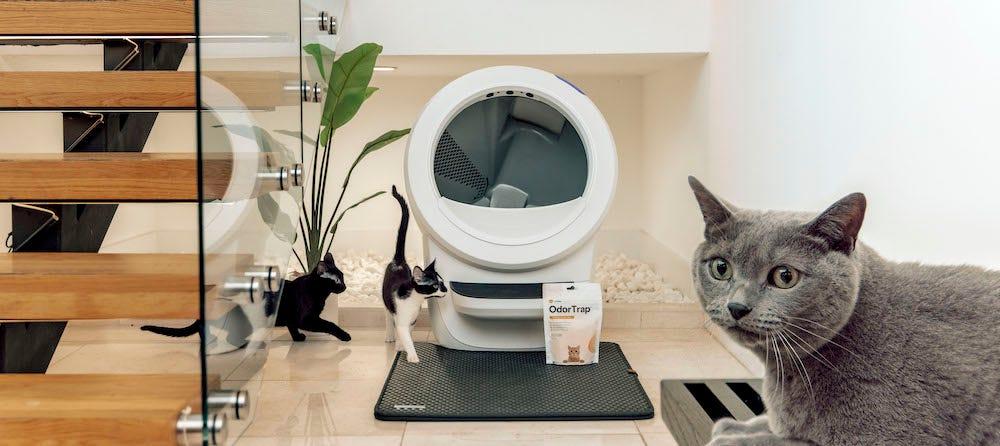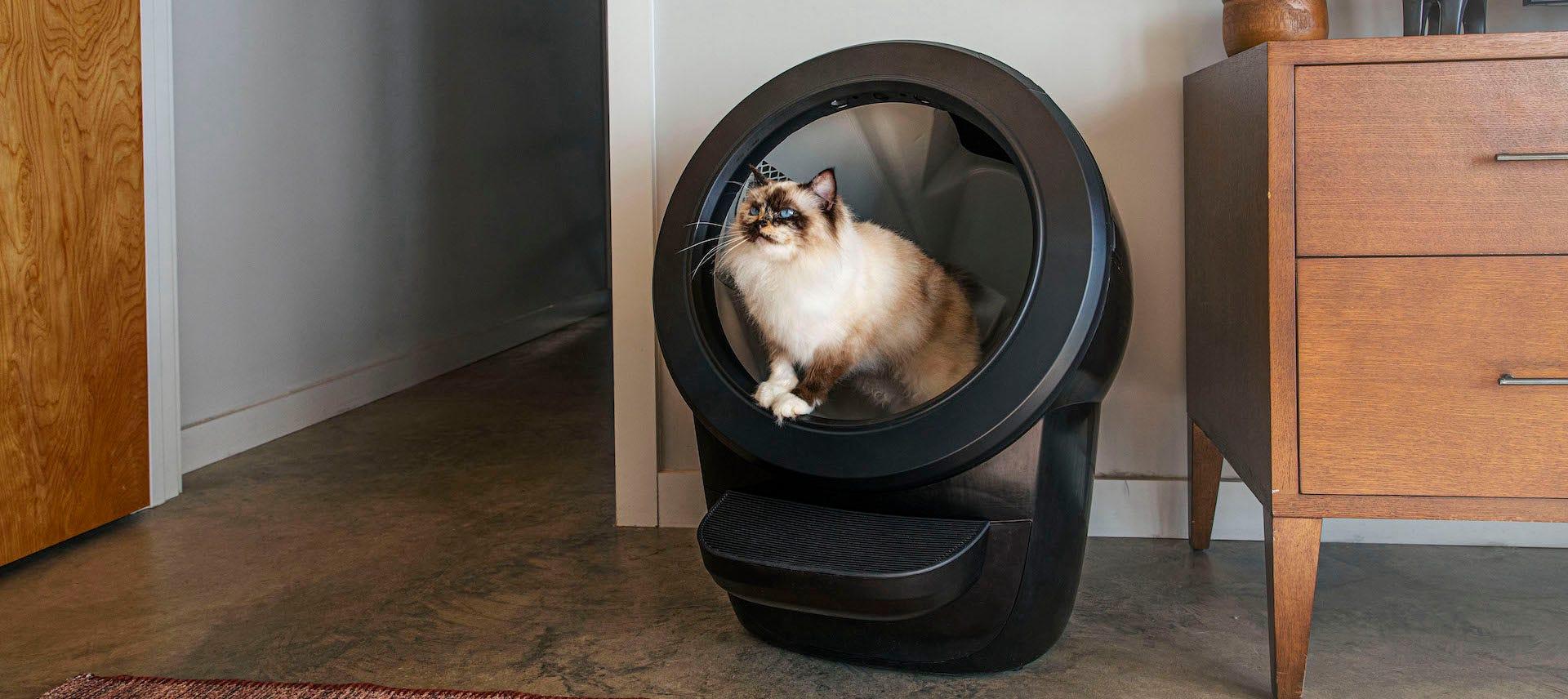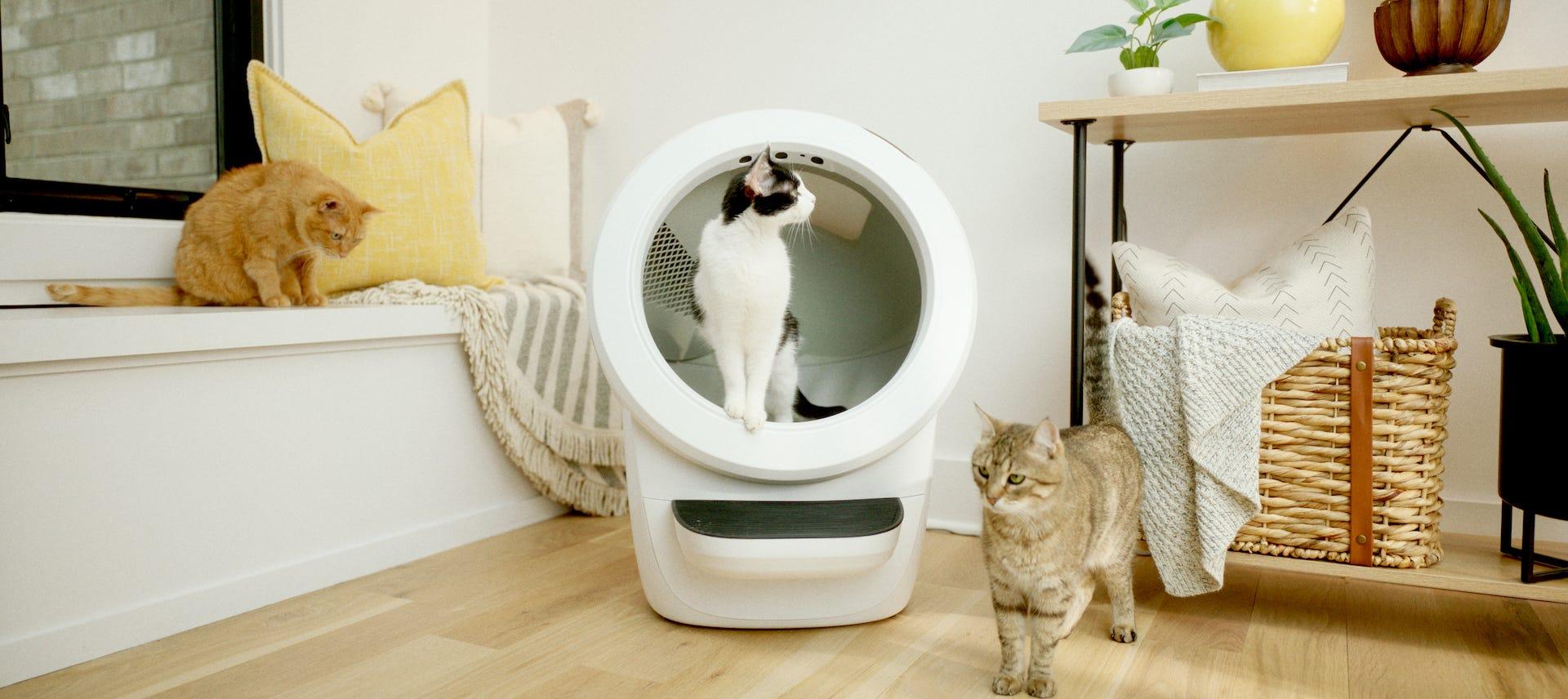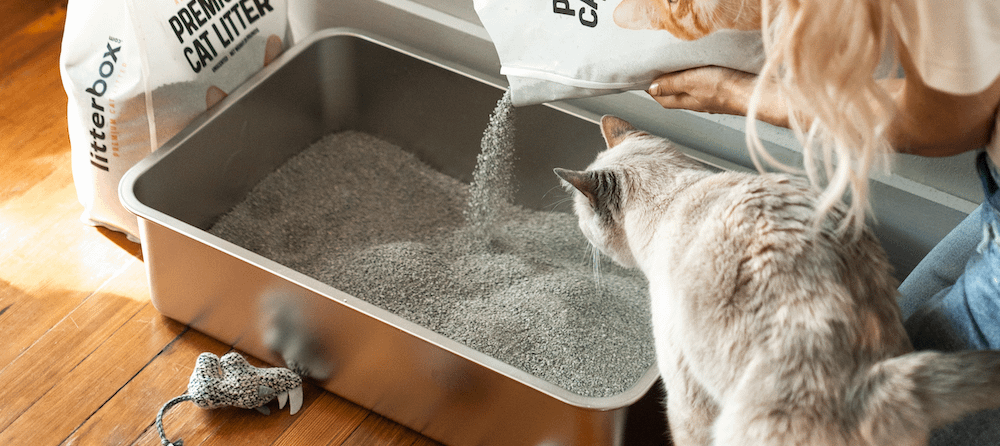Have you ever had a dream that you are surrounded by cats? Fluffy, adorable kitties everywhere! But then it quickly turns into a nightmare because…. no—no! Not the litter boxes!
If you have multiple cats, you know the struggle of constantly cleaning up after them, whether it’s cat food on the floor, hair on the couch, or clumps in the litter box. Here are some tips for litter box maintenance in a multi-cat household.
Be sure to check out our guide on managing a multi-cat household.
Can cats share a litter box?
Yes, cats can share a single litter box but it is not recommended as cats can be territorial, and some may not feel comfortable sharing a litter box with other cats, sometimes leading to them avoiding the litter box altogether. This can lead to territorial disputes and reluctance to use a shared box.
It’s essential to appropriately manage the arrangement and cleanliness of litter boxes to avoid issues.
How many litter boxes per cat?
Having an insufficient number of litter boxes in a multi-cat household can lead to various behavioral and even health issues. Providing an appropriate number of litter boxes to accommodate all cats in the household is paramount.
Vets recommend using n+1 litter boxes per cat, meaning the ideal number of litter boxes for 2 cats is 3. For 3 cats, the ideal number of litter boxes is 4. Et cetera, et cetera.
To put it more visually, this is how many litter boxes you should have per cat:
| Number of cats | Number of litter boxes |
| 1 | 2 |
| 2 | 3 |
| 3 | 4 |
| 4 | 5 |
| 5 | 6 |
| 6 | 7 |

What happens when there aren’t enough litter boxes?
Here's a more detailed look at the challenges associated with an insufficient number of litter boxes:
Increased competition
When there aren't enough litter boxes, cats may compete to access the available ones. This is especially true if some of your cats aren’t neutered or spayed, as they may be more territorial.
This competition can lead to stress, anxiety, and territorial disputes among the cats. In a worst-case scenario, one or more cats may be deterred from using the litter box altogether, leading to inappropriate elimination.
Territorial issues
Cats are territorial animals, and having too few litter boxes can exacerbate territorial issues. Some cats may guard or claim a particular box, preventing other cats from using it.
Inconsistent litter box use
Cats may develop inconsistent litter box habits if there's competition or if they feel uncomfortable sharing a box with other cats. Some cats may choose alternative locations for elimination, leading to litter box avoidance or inappropriate urination and defecation.
What happens when there are too many litter boxes?
While having too many litter boxes might seem like a positive situation, it can also have its challenges. Here are some considerations when there are an excessive number of litter boxes in a multi-cat household:
Space limitations
You might have guessed it. More litter boxes mean more occupied space in your home; this can become overwhelming, especially in a small house or apartment. If the boxes are spread out in a way that interferes with normal living areas, it can be inconvenient for both cats and their human companions. It's essential to strike a balance between providing enough options and maintaining a functional living space.
Cleaning challenges
While it's crucial to maintain clean litter boxes, having too many may make the cleaning process more time-consuming and labor-intensive, especially when vets recommend cleaning the litter box daily. Managing an excessive number of boxes can quickly become overwhelming, potentially leading to neglect of some boxes.
Monitoring litter box habits
With a surplus of litter boxes, it might be challenging to monitor individual cats' litter box habits effectively. Changes in behavior, signs of illness, or litter box aversions may go unnoticed if there are too many boxes to keep track of regularly.
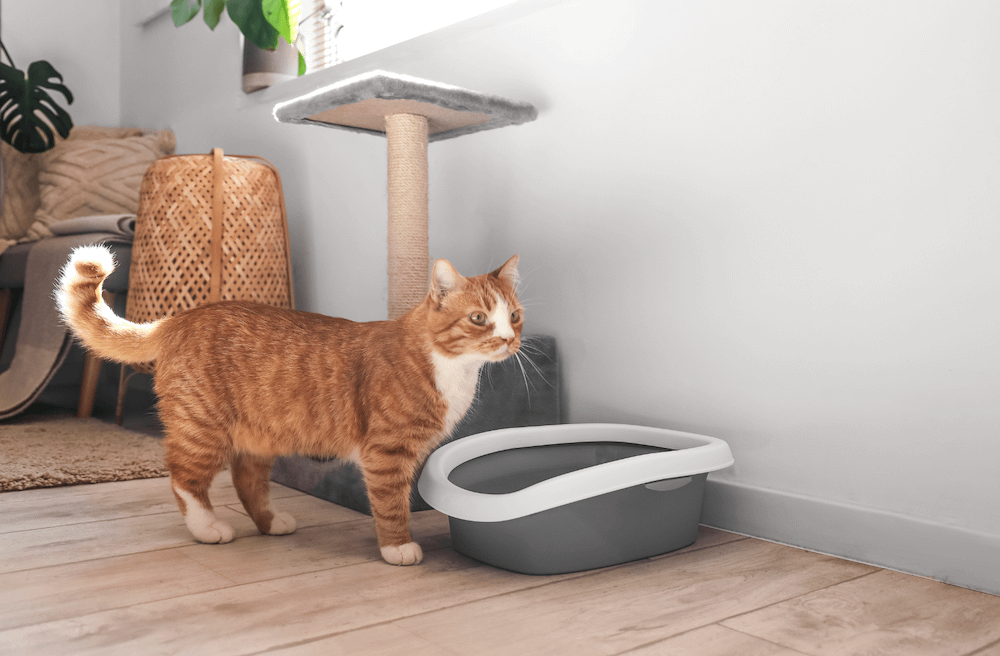
Tips to better manage litter boxes in a multi-cat home
1. Place your litter box strategically
Spread out your litter boxes
Don’t keep all of your litter boxes in one area of your home. Spread them out in different rooms on different levels. That way, there's always somewhere to go, no matter what part of the house your cats are in. If you live in a two-story home, keep litter boxes on both stories if you allow your cats to move between them.
Keep litter boxes accessible
Make sure your cats have uninterrupted access to their litter boxes. If you keep your litter box in a bathroom or closet, make sure to keep the doors open. Avoid placing litter boxes in high-traffic areas, especially areas where you might have guests. Also ensure that your cats have some level of privacy and that other 4-legged family members don’t have unauthorized access to the litter box.
Keep your litter box somewhere cool
If your litter box is somewhere warm, like next to a washing machine or by a heater, it may be encouraging mold growth and further spreading that litter box smell around your house. Move your litter boxes somewhere cool to stay clean, reduce litter box odors, and make your cat feel more comfortable.
Keep litter boxes away from strong smells and sounds
Cats are extremely sensitive to smell, so be sure to place your litter boxes away from their food and water bowls and where you cook.
Cats also prefer a quiet space to go. The laundry room might be convenient for you, but the noise of the washer and dryer may distress your cat. Find a quiet place free of smells to place your litter boxes.
2. Deep clean your litter boxes
We don’t need to tell you to scoop your litter box regularly, but you might need someone to nudge you to give your litter boxes a good scrub. We suggest giving your litter box a deep clean at least once per month.
Here’s how to clean a litter box:
Remove all litter and the liner if you use one, and give them a good power wash. Use soap and water or a pet-friendly cleaner to break up caked-on litter bits and sanitize them.
This will go a long way toward reducing that unpleasant litter box smell—your guests and cats will thank you!
3. Try a self-cleaning litter box
Multiple cats means multiple litter boxes, and multiple litter boxes mean you spend much of your time and energy bent over scooping cat litter. What if you could take even better care of your cats AND never have to scoop cat litter again?
We thought you'd like that idea. Try Litter-Robot 4, the highest-rated automatic self-cleaning litter box. Its smart weight sensor technology knows when your cat is inside and when it's time to clean up.
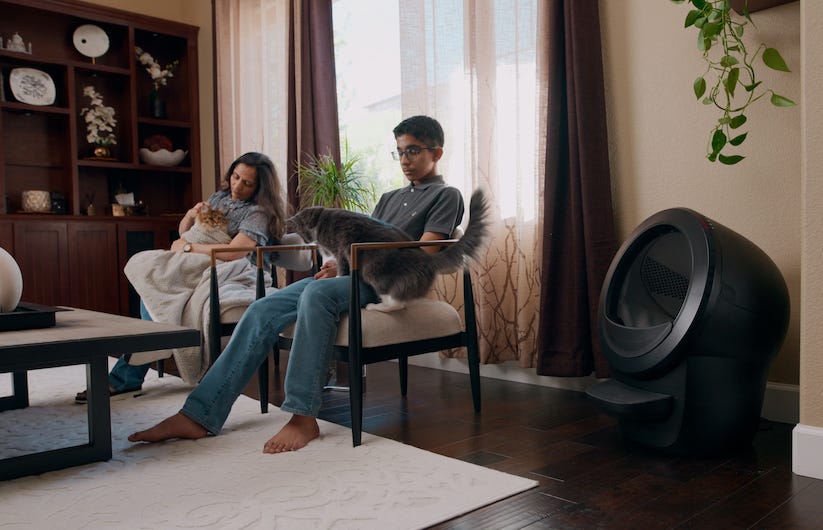
Minutes after your cat uses it, Litter-Robot starts a cleaning cycle, which means no matter how many cats use it, each one will have a fresh, clean place to go every time.
Litter-Robot is great for small cats, big cats, and lots of cats! In fact, one Litter-Robot is suitable for up to four cats. All you have to do is empty the waste drawer when indicated and add litter as needed. For a household with one cat, that's about every 7-10 days. For multiple cat households, that's about once per week! No more time wasted bent over scooping litter box after litter box!
For additional help check out our full litter box guide!
Hopefully, these tips will help keep your cats happy and healthy and make having a home with multiple cats feel like a dream again.

